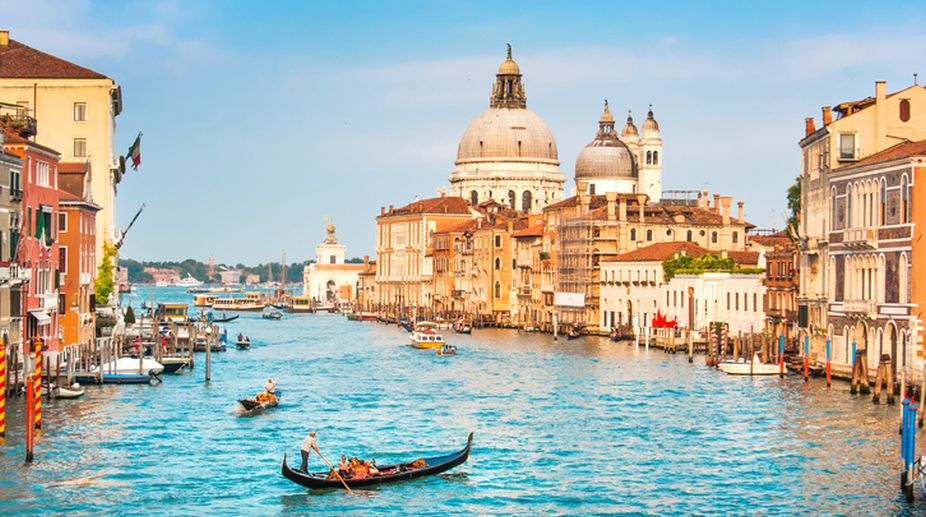It is an enigmatic city perched on a lagoon with a constant threat of flooding. Defiant residents have befriended the forces of the nature and have been living there for centuries. The intricate network of canals and bridges stand as a testimony to the masterly engineering and architecture on these water-locked islands of the Adriatic Sea. It is a place boasting of that romantic boat ride of a lifetime. For those still in the dark, one is referring to the hypnotic charms of the man-made delights of the magnificent ancient city of Venice and the indefatigable spirit of Venetians.
It is hard to imagine that a city thrives even though it is surrounded by the constant existential threat of water inundation and tidal waves. But Venice was erected with aplomb and its survival is a testimony to local engineering skills and using nature’s forces to its advantage.
Advertisement
As you arrive into Venice by train it shouldn’t surprise you to be greeted with boats and steamers jetting in the canal waters right at the very entrance of the Santa Lucia station on the Grand Canal. Venice doesn’t allow you anytime; it soaks you in right away, both metaphorically and literally.
The charms of this city pull foreign tourists from distances near and far. Oversized cruise ships, barges delivering supplies and waterbuses (called vaporetto) ferrying passengers dominate the views and at times seem too imposing on a rather fragile city like Venice. One can imagine the excessive toll it would take on the locals to be living in a famous centuries-old city, which is a cynosure of the world’s elite, rich and the famous, and a tourist hotspot. Venice stands in sharp contrast from the rest of the Italy. Lying in the extreme northeast of the country, it is not just geographically distinct but also the local arts, culture, cuisine and architecture are uniquely different.
During the 12th to 14th centuries, the city was a world power. Its influence was spread throughout the Mediterranean to Constantinople (modern day Istanbul). The wealth and power that came with exclusive maritime trade links with the East was celebrated in art and architecture throughout the city. The fabric of Venice has not changed and remains the same despite the centuries that have gone by. The city’s sounds are filled with tourists’ footsteps and calls of the boatmen.
It is hard not to notice the innumerable gondolas, many of them ferrying people and a few moored along the canal. The gondolas have a slim hull and flat underside, which are so designed to negotiate narrow canals. You may not notice it at the first glance, but they are slightly tilted with a leftward curve to the prow and that prevents the gondola from circling. They were decreed to be black in 1562 and that was done to prevent Venetians from ostentatious displays of their wealth. Only on certain special occasions are they decorated with flowers.
The city’s love for ornate decorations, pointed arches and bulbous onion-shaped domes are all there for visitors to admire. The city created its own unique style of architecture blending Gothic, Byzantine and Oriental. Every inch of land is precious for Venice and therefore, designing weightless buildings turned out to be of paramount necessity. The architecture never allowed more weight and hence we see the beautiful lightness and grace in structure, which outwardly looks robust and heavy.
One place where you can see such a splendid display is Piazza San Marco and Basilica — historic square of Venice where countless carnivals, festivities and processions took place. In ancient times, by law, all ships returning from abroad had to bring back a precious gift to adorn the House of St Mark. Until 1807, St Mark’s was the Doge’s (Venice’s rulers) private chapel, used for ceremonies of State, and later became the cathedral of Venice. It contains hordes of silver, gold and glassware in its treasury.
Located in the same square is the Doges’ Palace, built in the ninth century. This was the official residence of Venice’s rulers. The distinct pink colour of the palace comes from the usage of the Veronese marble. Visitors can see the richly decorated chambers and halls of this three-storied structure. According to folklore, Casanova was once imprisoned here and made a daring escape through a hole in the roof. The complex consists of Doge’s private apartments, large council chambers, courts and prisons.
The square is surrounded by numerous souvenir shops. Particularly, you would be awestruck with shops selling carnival face masks and Murano glass — a centuries-old technique of creating specialised fancy glassware. You will find a vast display of tourist souvenirs including crystalline glass, enameled glass, golden glass, multicoloured glass, chandeliers and figurines.
At the beginning of the Grand Canal, a 17th century domed church can be seen commissioned by Venice’s plague survivors as a gesture for their rescue. The grand galleries of the Gallerie dell’Accademia house Venetian art from the 14th to18th centuries with collections from Bellini, Titian, Tintoretto, Veronese and Canaletto.
La Fenice is Venice’s opulent and historic opera house with a marvellous theatrical and immersive experience. The venue was where Verdi’s Rigoletto and La Traviata premiered. Venice is also home to the great Baroque composer Antonio Lucio Vivaldi, who was also a virtuoso violinist. His best-known work is a series of violin concertos known as The Four Seasons.
An impossible and audacious city with incredible wealth, Venice offers travellers overwhelming bliss, carnivals and aquatic fanfare.











